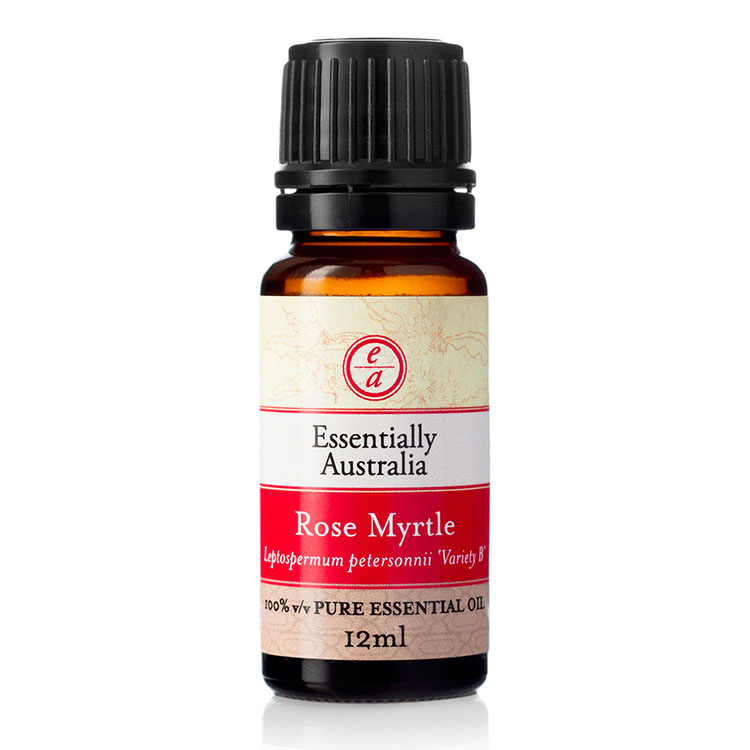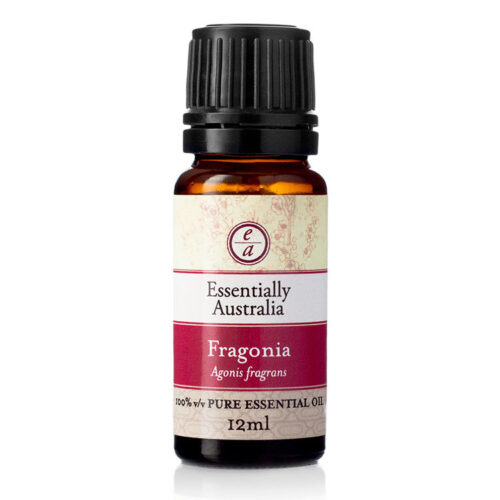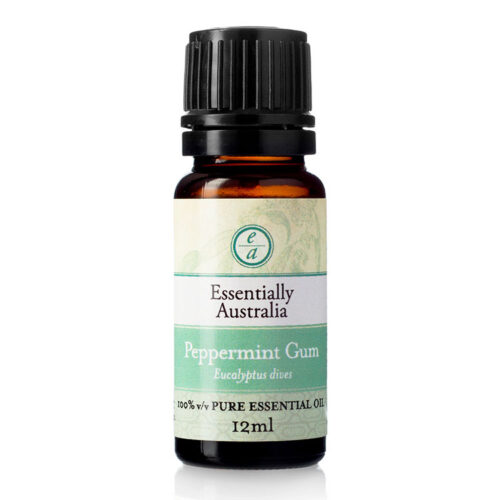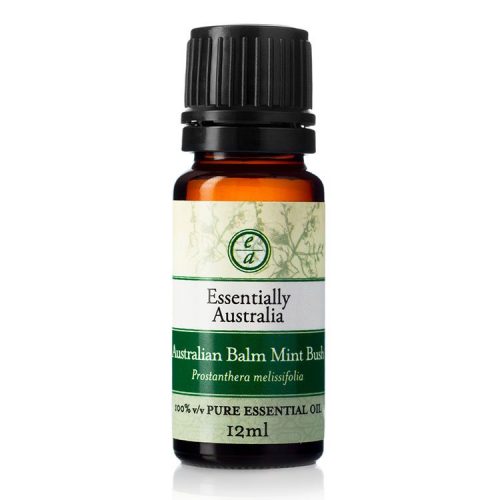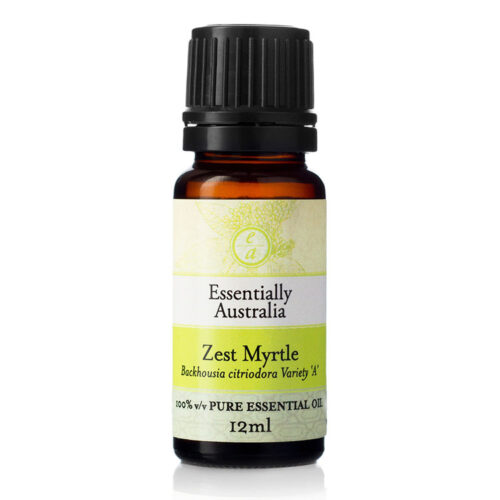Rose Myrtle an Australian essential oil exclusively released by Essentially Australia, in 2014, with fresh fruity, rosy and lemony elements, quite unique.
Rose Myrtle Essential Oil
Price range: $38.95 through $1,430.00
Description
Rose Myrtle Essential Oil
Rose Myrtle essential oil is one of Australia’s newest essential oil. The aroma is initially uplifting like Lemon Myrtle, followed by a fruity aroma with a gentle rose note. It is not a blend but a unique essential oil from a very rare Australian plant. It will freshen a home or room and it appeals to men, women and children.
Botanical name: Leptospermum petersonii Variety ‘B’
Ingredients: 100% v/v pure Rose Myrtle essential oil.
Rose Myrtle Essential Oil Aroma
Initially an uplifting lemon (Lemon Myrtle) aroma, followed by a fruity aroma, then a rosy aroma. Some may also detect traces of pine and tea tree elements. Pleasant for men, women and children.
Rose Myrtle Essential Oil Benefits
Uplifting, relaxing, sedative, calming, improves concentration, anti-depressive, aids happiness, remove bad room smells, calm noisy children.

Aromatherapy Essential Oils
Rose Myrtle Essential Oil Uses
Add a couple of drops to a diffuser, oil burner, air purifier, air freshener, potpourri, bath, vacuum cloth bag, floor washing water or dishwashing liquid.
MORE INFO
Directions and More Uses
Aromatherapy Oil
2 to 4 drops in a diffuser, oil burner or vaporiser for an uplifting lemon/fruity/rosy aroma.
Blend Rose Myrtle Essential Oil with
Rose Myrtle essential oil is simply excellent on its own or blend with woody, spicy, floral oils but not citrus. Use Rose Myrtle oil sparingly in blends to avoid overpowering. Try blending Rose Myrtle oil with Eucalyptus varieties, Niaouli, Sandalwood or Tea Tree.
Main Actives of Rose Myrtle Essential Oil
Contains up to 30% citral (lemony aroma), containing: geranial, neral, cis citral, also geranyl acetate (fruity aroma) up to 30% and geraniol (rose aroma ) up to 18%.
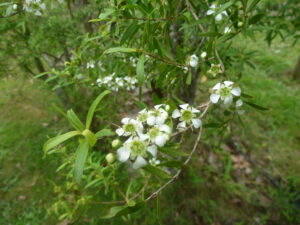
Rose Myrtle essential oil flowers at our Byron Bay plantation
Precautions
Keep out of reach of children, do not apply direct to the skin as this may cause skin irritation, store away from direct sunlight, store below 30 degrees.
Other Common Names
Rose scented tea tree, Leptospermum petersonii ‘Variety B’
Natural Occurrence in Australia
Rose Myrtle trees naturally occurs in only a few hectares of lowland or floodplain country, in northern New South Wales. The tree is extremely rare, and Rose Myrtle grows to a maximum height of 10 metres in the wild. High and regular rainfall with rocky and alluvial soils are its prime habitat.
Characteristics
Clear to amber yellow in colour; watery consistency; scent citrus/lemony/fruity/rosy/ possibly some pine and tea tree elements.
Research
Swinburne University has commenced some very basic tests and research on Rose Myrtle oil.
Extraction and Farming Method
Rose Myrtle oil is extracted via steam distillation of the leaves and green branchlets. The tree is grown in plantations in northern New South Wales. Plantation trees are planted in rows, are kept to a maximum height of 4 metres, they are hand harvested and are then steam distilled immediately to maintain quality Rose Myrtle essential oil.
History
Traditional Usage
At present there is no evidence of indigenous use of this plant. This may be because the tree is so rare in the wild and the local population of indigenous peoples were forced to move away after European settlement of the area. The large scale clearing of forest very early on for sugar cane and cattle grazing could also have contributed to loss of information on it’s traditional uses.
However it is reasonable to assume the leaves were rubbed on the skin for a perfume effect.
Early European Usage
There is no record of Rose Myrtle oil being produced and sold previously.
Present Day Usage
Rose Myrtle oil was exclusively launched by Essentially Australia at 11am, on the 3rd of June 2014 at the Byron Bay Community Centre with a speech and the support of the Byron Shire Mayor, Simon Richardson.
Typical Chemical Profile of Rose Myrtle Essential Oil
alpha-thujene 1.5-3.5%
alpha-pinene 1%-10%
myrcene trace – 1.8%
limonene 0.5-2.5%
linalool 1.0-3.0%
gamma terpineol 6-13%
terpinen 4-ol 1.0-2.0%
geranyl acetate 10 – 30%
geraniol 5 – 17%
neral 5 – 12%
geranial 5 – 12%
Relative Density: 0.880-0.910
Refractive Index @ 20 C 1.4880-1.4900
Optical Rotation +3.5-+12.0
Additional information
| Weight | .1 kg |
|---|---|
| Dimensions | 3 × 3 × 8 cm |
| Size | 12ml, 25ml, 100ml, 1kg |


